How immune dynamics shape multi-season epidemics: a continuous-discrete model in one dimensional antigenic space
- PMID: 38538962
- PMCID: PMC10973021
- DOI: 10.1007/s00285-024-02076-x
How immune dynamics shape multi-season epidemics: a continuous-discrete model in one dimensional antigenic space
Abstract
We extend a previously published model for the dynamics of a single strain of an influenza-like infection. The model incorporates a waning acquired immunity to infection and punctuated antigenic drift of the virus, employing a set of coupled integral equations within a season and a discrete map between seasons. The long term behaviour of the model is demonstrated by examples where immunity to infection depends on the time since a host was last infected, and where immunity depends on the number of times that a host has been infected. The first scenario leads to complicated dynamics in some regions of parameter space, and to regions of parameter space with more than one attractor. The second scenario leads to a stable fixed point, corresponding to an identical epidemic each season. We also examine the model with both paradigms in combination, almost always but not exclusively observing a stable fixed point or periodic solution. Adding stochastic perturbations to the between season map fails to destroy the model's qualitative dynamics. Our results suggest that if the level of host immunity depends on the elapsed time since the last infection then the epidemiological dynamics may be unpredictable.
Keywords: Discrete dynamics; Dynamical systems; Epidemiological modelling; SARS-CoV-2; Seasonal influenza.
© 2024. The Author(s).
Conflict of interest statement
The authors have no conflict of interest to declare that are relevant to the content of this article.
Figures
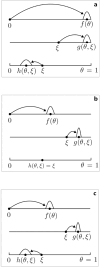
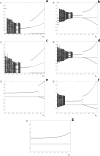
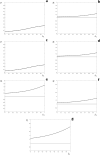
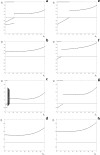
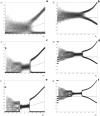
Similar articles
-
A simple influenza model with complicated dynamics.J Math Biol. 2019 Feb;78(3):607-624. doi: 10.1007/s00285-018-1285-z. Epub 2018 Aug 28. J Math Biol. 2019. PMID: 30155777
-
Epidemic dynamics and antigenic evolution in a single season of influenza A.Proc Biol Sci. 2006 Jun 7;273(1592):1307-16. doi: 10.1098/rspb.2006.3466. Proc Biol Sci. 2006. PMID: 16777717 Free PMC article.
-
Dynamics of annual influenza A epidemics with immuno-selection.J Math Biol. 2003 Jun;46(6):504-36. doi: 10.1007/s00285-002-0186-2. J Math Biol. 2003. PMID: 12783180
-
The evolution of seasonal influenza viruses.Nat Rev Microbiol. 2018 Jan;16(1):47-60. doi: 10.1038/nrmicro.2017.118. Epub 2017 Oct 30. Nat Rev Microbiol. 2018. PMID: 29081496 Review.
-
[The peculiarities of the influenza epidemics in some areas of Russia during 2012-2013 season. The influenza A (H1N1) pdm09 virus domination in European countries].Vopr Virusol. 2014 Mar-Apr;59(2):5-10. Vopr Virusol. 2014. PMID: 25069278 Review. Russian.
References
-
- Dan JD, Mateus J, Kato Y, Hastie KM, Yu ED, Faliti CE, Grifoni A, Ramirez SI, Haupt S, Frazier A, Nakao C, Rayaprolu V, Rawlings SA, Peters B, Krammer F, Simon V, Saphire EO, Smith DM, Weiskopf D, Sette A, Crotty S (2021) Immunological memory to SARS-CoV-2 assessed for up to 8 months after infection. Science. 10.1126/science.abf4063 - PMC - PubMed
-
- Diekmann O, Heesterbeek JAP, Britton T. Mathematical tools for understanding infectious disease dynamics. Princeton: Princeton University Press; 2013.
Publication types
MeSH terms
Grants and funding
LinkOut - more resources
Full Text Sources
Medical
Miscellaneous

